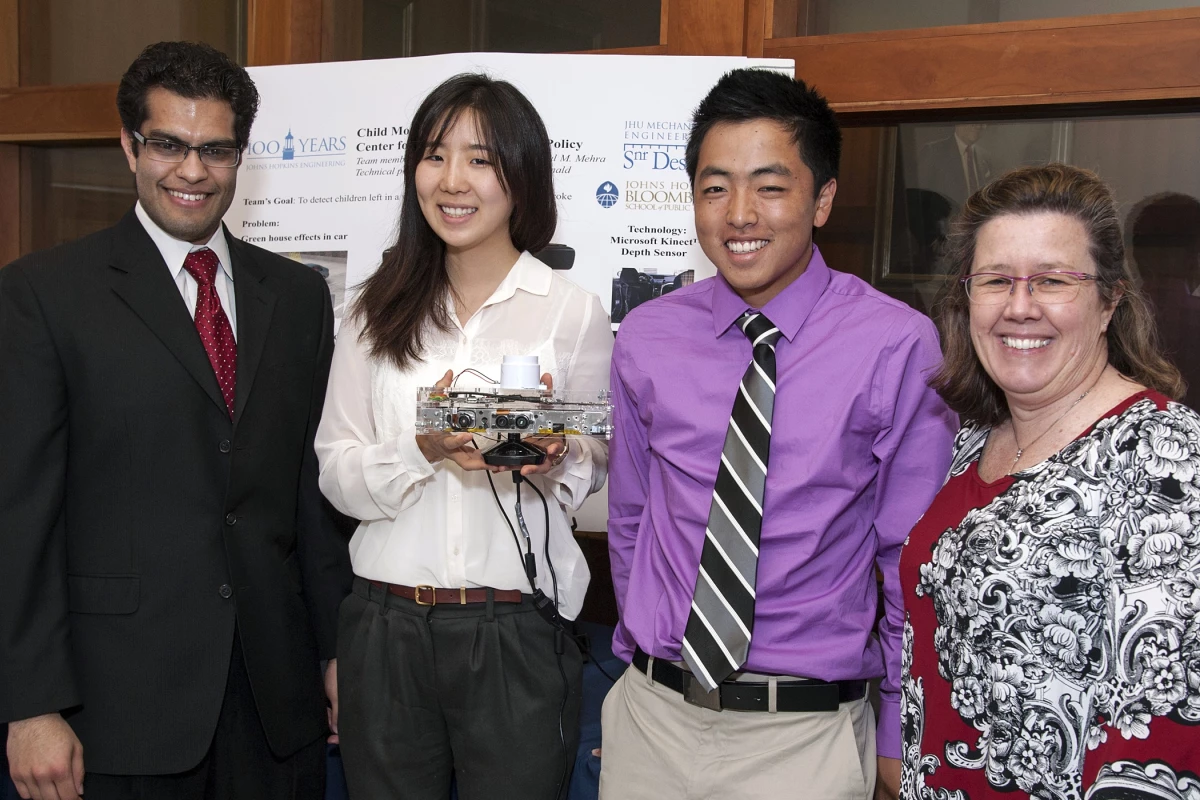Whether it’s through parents’ forgetfulness, ignorance or just plain not caring, it does sometimes happen ... small children die from heatstroke after being left unattended in a hot parked car. According to a 2012 study conducted by the US National Highway Traffic Safety Administration, an average of 38 such deaths occur in the United States alone each year. While various systems have been developed to help keep this from happening, three engineering undergrads from Baltimore’s Johns Hopkins University have taken a unique approach. They’ve converted a Microsoft Kinect into a child-in-the-hot-car detector.
The students – Anshul Mehra, Yejin Kim and Jeffrey Kamei – invented the device as part of a mechanical engineering senior design course, in which student teams were tasked with creating something for a real-world client.
In this case, Johns Hopkins’ own Center for Injury Research and Policy was the client, and it wanted a system that could reduce the number of deaths caused by children being left in cars. The center particularly wanted something that worked passively, not requiring parents to flip any switches, slip a bracelet onto their child’s wrist, or otherwise activate it – after all, if they thought to do any of those things, they’d likely not be the type to leave their kid behind in the first place.
It occurred to the team to adapt a Kinect, as it’s able to detect even the smallest of movements, such as those made by a sleeping baby. Additionally, because the infrared light that it uses is blocked by window glass, it wouldn’t be falsely triggered by movements occurring outside of the vehicle.
While the child-detecting technology is still in development, presumably it would ultimately take the form of a built-in system that would become active once the vehicle was parked, and its cabin temperature reached a critical point. From there, it could sound an alarm, notify police, or a car security service such as OnStar if it detected the presence of an occupant.
Although the students have completed their part in the project, it is hoped that subsequent teams might be able to take the system to the point of commercialization.
Source: Johns Hopkins University




